Pliosaur discovery: Gigantic skull of sea monster is found on the cliffs of Dorset’s Jurassic Coast
The skull of a huge sea monster that roamed the seas nearly 150 million years ago has been discovered off the coast of England.
The enormous fossil, found on Dorset's Jurassic Coast, is about seven feet long and belongs to a marine reptile known as a pliosaur.
The ancient creature, known as the 'apex predator of the ocean', is set to be the subject of a brand new BBC David Attenborough documentary, which will be broadcast on New Year's Day.
He will be joined by a team of expert scientists and paleontologists as they embark on excavation and restoration of the rare find, which they believe could be a new species of pliosaur.
The ancient pliosaur was the “ultimate killing machine,” capable of cruising the ocean at high speed and killing its prey with a single bite.
Sir David Attenborough with palaeontologists Steve Etches and Chris Moore examining a pliosaur skull in the Etches Collection Museum workshop

Restored pliosaur skull, 150 million years old, excavated from cliffs of the Jurassic Coast, Dorset
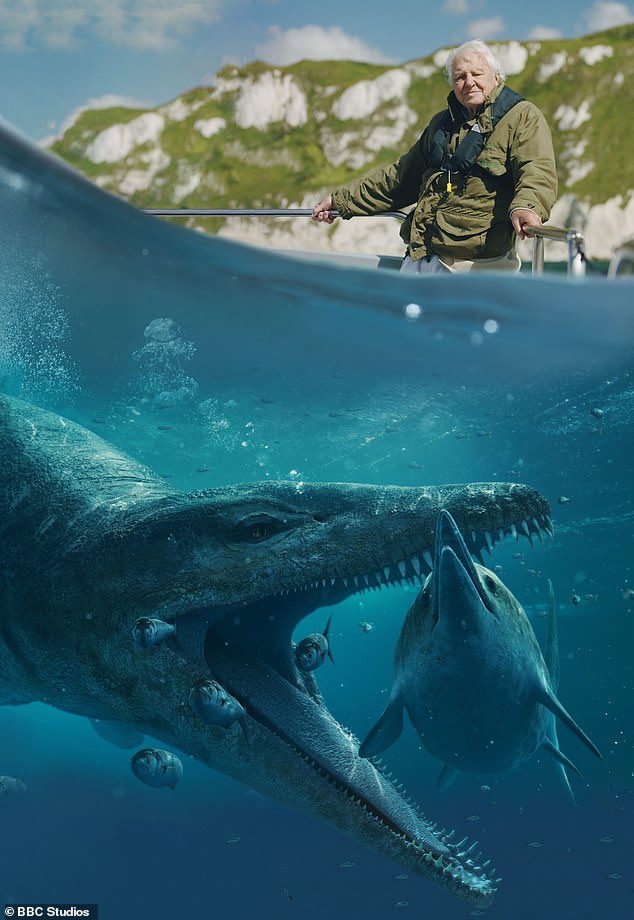
The ancient creature, known as the 'apex predator of the ocean', is set to be the subject of a brand new BBC David Attenborough documentary which airs on New Year's Day.
The skull contains about 130 long, sharp teeth. Each tooth has tiny ridges on the back to pierce the flesh of its prey and prepare itself for a quick second attack.
Scientists told the BBC that its prey was dolphin-like creatures and other dinosaurs.
Pliosaurs had jaws twice as powerful as today's saltwater crocodiles.
“The animal would have been so huge that I think it would have been able to effectively prey on anything unfortunate enough to be in its place,” said Andre Roux, a paleontologist from the University of Bristol. BBC News.
The creatures grow to be 32-39 feet long and propel themselves quickly with four powerful flipper-like limbs.
“I have no doubt that this was like an underwater T. rex,” Rowe said.
The exciting discovery was made when fossil enthusiast Phil Jacobs was walking along the rocky shores of Kimmeridge Bay last year when one morning he discovered the jaw of a giant pliosaur.
The site is famous for its fossils and contains some of the most important geological discoveries on the Jurassic Coast.
Many of these specimens were found by Dr Steve Etches MBE, who spent more than 30 years collecting over 2,000 specimens.
Mr Etches was then called in to assess the find and speculated that the rest of the skull could have been encased in the cliff above.
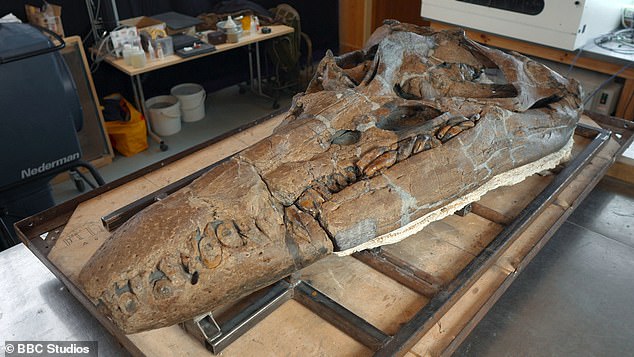
The ancient pliosaur was the “ultimate killing machine,” capable of cruising the ocean at high speed and killing its prey with a single bite.
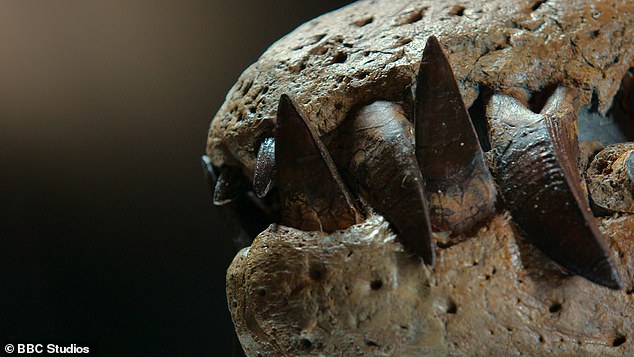
The skull contains about 130 long, sharp teeth. Each tooth has tiny ridges at the back to pierce the flesh of the prey and prepare itself for a quick second attack
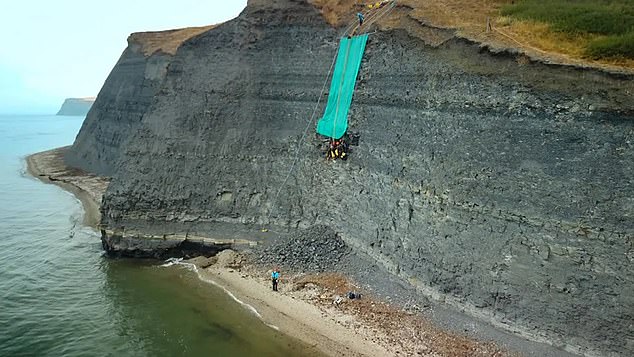
The exciting discovery was made when fossil enthusiast Phil Jacobs was walking along the rocky shores of Kimmeridge Bay last year when one morning he discovered the jaw of a giant pliosaur.
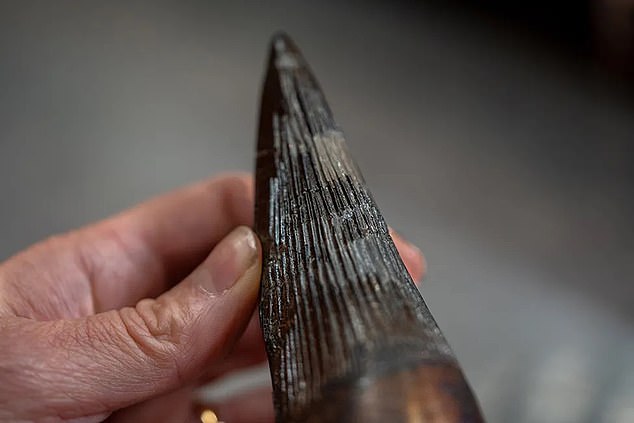
While passionate fossil researchers have worked with each other for decades, they describe this particular fossil as the largest discovery they have ever encountered.
He assembled a team of experts to excavate the rest of the fossil, including fellow fossil hunter Chris Moore, who runs a small family fossil business in Charmouth.
While passionate fossil researchers have worked with each other for decades, they describe this particular fossil as the largest discovery they have ever encountered.
“There is nothing to compare it to today,” Dr. Etches said.
“They are large carnivorous reptiles and one of the largest reptiles to ever live in the sea.” It's even bigger than a tyrannosaur, bigger and more ferocious.'
After the skull was safely extracted, it was transported to Mr Etches's nearby workshop where restoration work began. It took several months to bring him back to life.
This includes shaping skull crowns from the remains of the famous triangular-shaped pliosaur tooth that Mr Moore found in the cliff.
With the help of paleontologists, visual effects sequences and digital scans, viewers will witness the culmination of scientific research as they are given a detailed look into the life of this pliosaur, seeing what it looked like, moved and hunted its prey.
Attenborough and the Sea Monster will air at 8pm on New Year's Day on BBC One and iPlayer.
(Tags for translation)dailymail
